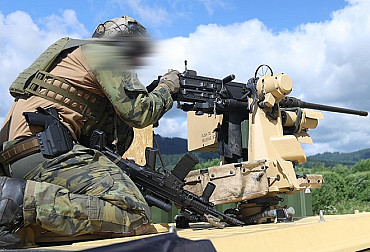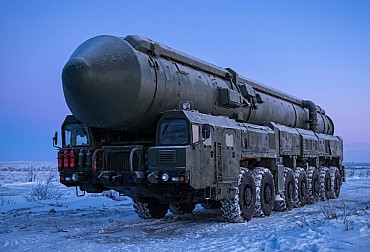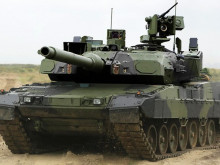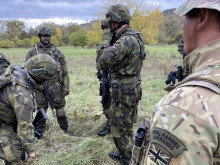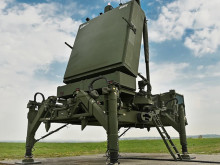How much do Czech citizens pay for their defence? Can they afford to pay more?
The Czech Republic constantly postpones reaching defence expenditures of 2 % of the GDP. Although each government declared this commitment, we are not successful. Do we lack money? Let’s demonstrate how much does defence cost in various states using different economic data than those that are commonly used.
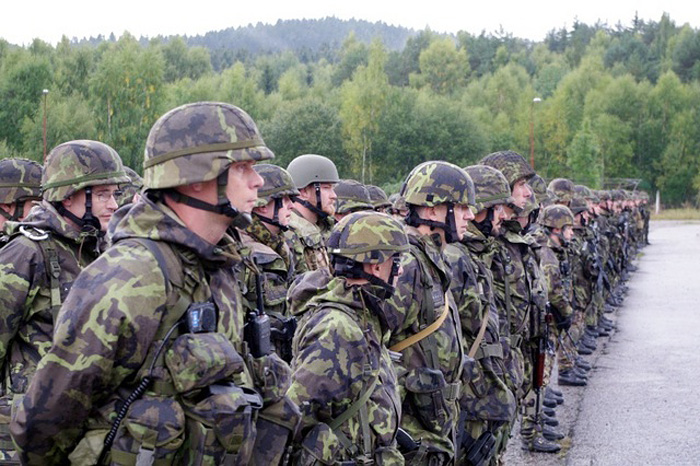
Picture: The Czech Republic constantly postpones reaching the level of defence expenditures of 2 % of the GDP, although each government declares this commitment. | army.cz
According to the Stockholm International Peace Research Institute (SIPRI) the USA spend USD 649 billion for their defence. We divided this amount by the number of inhabitants of the USA, which equals to 329 million. It means that each American spends USD 2000 a year for defence. Inhabitants of Israel pay even more for their defence: USD 2250 a year each.

Picture: Each American spends USD 2000 a year for defence | eucom.mil
We selected several other countries, where we simply divided the total amount of defence expenditures (based on the SIPRI data) by the number of inhabitants, and the approximate expenditure of each citizen of the following states is as follows:
Frenchman … USD 950
Briton … USD 750
Swede … USD 630
Swiss … USD 620
German … USD 600
Russian … USD 420
Pole … USD 300
Czech … USD 270
Bulgarian … USD 140
We can object that the level of earnings and prices of goods and services differ in individual countries, which means that this should be subsequently adjusted to purchasing power parity. Or we can say that the differences in economic performance of the countries present the reason why defence expenditures are measured in per cents of the GDP. But honestly, what do these data mean?
.jpg)
Picture: Inhabitants of Israel pay even more for their defence: USD 2250 a year each. (In the picture we can see the main combat tank Merkava Mk4 developed and produced in Israel for the Israeli defence forces) | Wikimedia Commons
We made another step: we divided the yearly contribution of one inhabitant by his/her average hourly earnings, in order to determine how long a citizen works to earn money for his/her countries’ defence. If an American earns USD 22 per hour in average, than he/she works 91 hours to earn money for his/her country’s defence. It was more difficult for us to find information on average salaries (sources in the Czech press), so let’s at least look at some of the states from the original chart.
How many hours for the average hourly rate does a citizen of the selected countries work, in order to contribute for the national defence:
Russian (at USD 3 per hour) … 140 hours
German (at USD 31 per hour) … 19 hours
Pole (at USD 6.5 per hour) … 46 hours
Czech (at USD 9 per hour) … 30 hours
Bulgarian (at USD 5 per hour) … 28 hours
What does this mean? If Czechs devoted the same amount of time as Americans to contribute to their defence budget, they would have three times more financial means at disposal than they have now. Of course it would still be much less than Americans, as they work for 2.5times lower rates. On top of that the USA spend 3.6% of their GDP on defence. In the beginning it would be enough if Czechs followed Poles and increased their hourly participation to 150% of the existing participation, by means of which they would achieve the NATO commitment.
On the contrary, it is surprising, how Germans cut back on their defence. Their defence spending amount to 1.36% of their GDP. And it is evident that they could afford to meet their 2% commitment! With regard to similar salary level in the old EU member states it is likely, that there are more richer Western countries, where people work less than 30 hours to earn money for their defence, i. e. less than Czechs.
Is there a point in such statistics? Defence expenditures have two big components – soldiers’ salaries on the one hand, which are logically much higher in Germany than in the Czech Republic, and expenditures for the purchase of military equipment with the same prices worldwide on the other hand. The higher the earnings of a nation, the shorter period it can take for them to gain money for new tanks, helicopters etc. The number of population should of course reflect the possible number of tanks, helicopters and other military equipment adjusted to one citizen.
Picture: Several times in the past we could witness the American president Donald Trump (in the picture) expressing his anger with some NATO member states, who fail to get close to the 2% of the GDP commitment. | centcom.mil
It is necessary to take into account that the NATO states ranking with respect to defence spending have moral dimensions in international politics. Several times in the past we could witness the American president expressing his anger with some NATO member states, who fail to get close to the 2% of the GDP commitment. It is true that he could regard many states accusingly even when using the indicator adjusted to work of citizens, as mentioned above. The placement of states in such ranking would be different then it has been up to now, though. Czech Republic would not rank on top positions from any perspective. When Washington gets angry next time, let’s realize that Czech Republic is not (by far) the only cause.
















